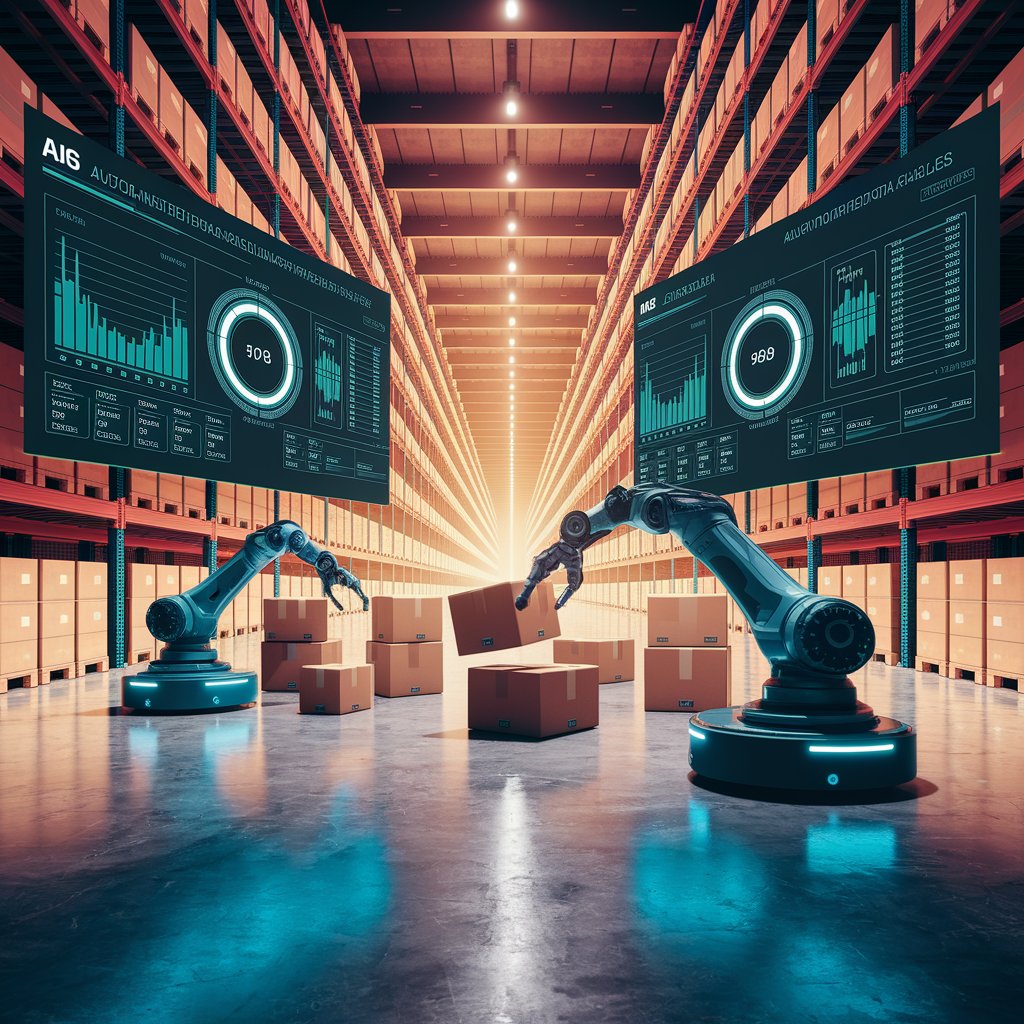Warehouse Robotics Software: Automating Efficiency with Linbis

Introduction
That’s where warehouse robotics software from Linbis comes in.
By combining AI-driven automation, real-time analytics, and robotic process integration, Linbis enables logistics companies to transform warehouse operations into fully optimized, self-learning systems.
Step 1: Integration Between Robots and Systems
Linbis serves as the central control layer between warehouse robots, management software, and business systems:
- Connects automated guided vehicles (AGVs) and robotic arms for synchronized movement.
- Integrates with WMS and ERP systems to align real-time stock data.
- Automates task assignments for picking, packing, and restocking.
- Sends status updates to the logistics dashboard instantly.
This unified platform ensures machines, humans, and systems work together seamlessly — maximizing throughput with minimal friction.
Step 2: AI-Powered Task Allocation
Using predictive analytics, Linbis decides which robot should perform which task, based on:
- Distance to item or location.
- Battery life and workload balance.
- Priority orders and deadlines.
- Equipment type and current availability.
This AI-driven decision-making reduces idle time and ensures maximum resource utilization.

Step 3: Real-Time Monitoring and Visibility
Linbis provides live dashboards showing warehouse performance in real time:
- Robot activity tracking and task completion rates.
- Storage heat maps for item distribution.
- Real-time alerts for congestion, low battery, or malfunctions.
- Order accuracy and cycle time analytics.
Managers gain complete visibility and can make instant adjustments when necessary.
Step 4: Automation of Core Warehouse Processes
Linbis automates the most time-consuming warehouse operations:
- Inbound logistics: Robots scan, label, and store incoming goods automatically.
- Picking and packing: Smart algorithms assign optimized routes to minimize walking or driving distance.
- Inventory control: Continuous cycle counts detect discrepancies instantly.
- Outbound logistics: Orders are packed, labeled, and staged for shipping without manual intervention.
The result: faster operations, fewer errors, and consistent accuracy across shifts.
Step 5: Predictive Maintenance and Optimization
AI doesn’t just automate tasks — it ensures robots stay productive:
- Predicts maintenance needs before breakdowns occur.
- Analyzes performance trends to optimize shift allocation.
- Suggests layout adjustments for better traffic flow.
- Continuously learns from warehouse activity patterns.
This predictive layer turns Linbis into a smart warehouse control tower.

Advanced Features
- AI-driven task optimization for picking and routing.
- 3D warehouse visualization with robot position mapping.
- IoT-based sensor integration for condition monitoring.
- Automated data syncing with WMS and ERP.
- Voice and barcode recognition for hybrid human-robot workflows.
Real-World Example 🚛
A logistics operator in Chicago implemented Linbis warehouse robotics software to manage robotic pickers and AGVs across two large distribution centers. In 6 months:
- Increased fulfillment speed by 48%.
- Reduced picking errors by 35%.
- Saved over 120 labor hours per week.
Robots now communicate directly with Linbis to plan routes, execute tasks, and report status — no manual scheduling required.

Benefits 📈
- Efficiency: Robots and humans working in perfect sync.
- Accuracy: Near-zero error rates in picking and inventory.
- Visibility: Real-time monitoring across all warehouse assets.
- Scalability: Easily expand operations as volume grows.
- Sustainability: Lower energy and resource waste through AI optimization.
Conclusion
With Linbis warehouse robotics software, logistics providers can go beyond traditional automation and create intelligent, adaptive warehouses that run themselves.
From predictive maintenance to AI-driven task assignment, Linbis empowers logistics leaders to scale faster, reduce costs, and stay competitive in the era of smart warehousing.
